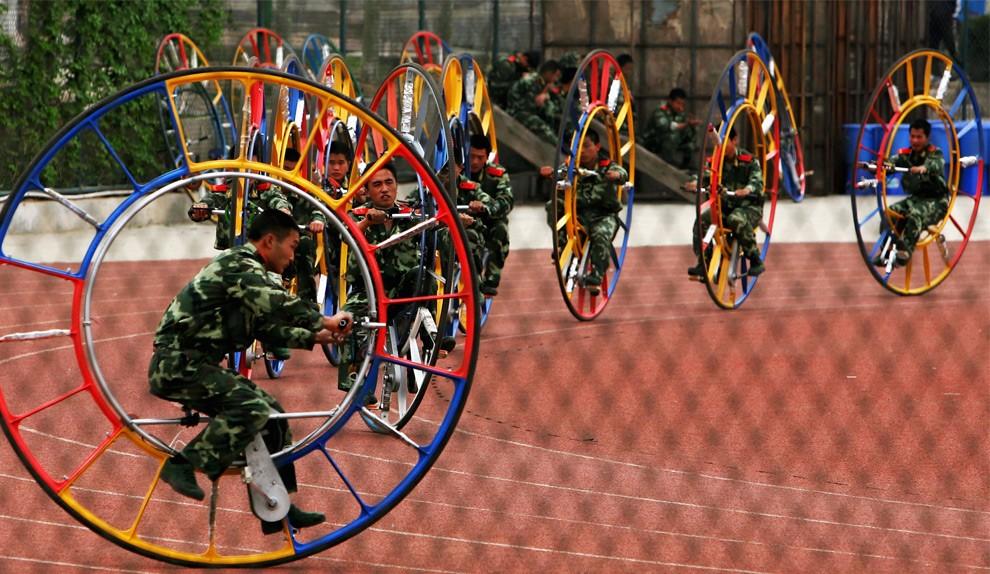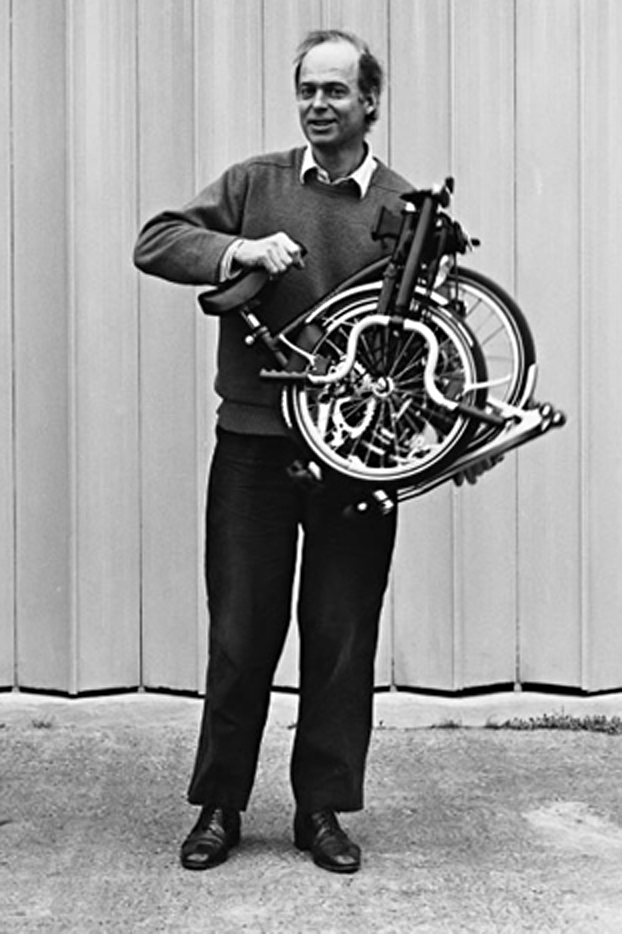- Joined
- 9 October 2009
- Messages
- 21,978
- Reaction score
- 13,638
http://www.dtic.mil/dtic/tr/fulltext/u2/a211795.pdf
I'm not quite sure I'd want to pack me, gear for a week, and a 20kg mortar tube on a Moulton ... like we did back in 1980s...Jemiba said:And today, the refusal of foldable bikes as being not stable is no longer a theme, just
look at Moulton bikes
Cables are needed for the breaks anyway and can be placed protected, even in the frame tubing.perttime said:Depending on expected terrain, I might pick a singlespeed military bike instead of a hub gear. Hub
gears (with cables that get snagged and shifters that break) are more complex, and weigh more.
Depending on expected terrain....Jemiba said:Cables are needed for the breaks anyway and can be placed protected, even in the frame tubing.perttime said:Depending on expected terrain...
Singlespeed is great, as long as you don't get into difficult terrain, but at the first steep hill, speed
drops below that of a walker....
Steering a bike with one hand while applying full brakes usually ends with rider and bike parting company. Drop everything, grab handlebar with both hands, then brake.cluttonfred said:It is likely that bicycle troops would want to keep at least one hand free whenever possible for communications gear, binoculars, even firing a weapon, and it would be nice to be able to hold on to those things and still have full braking power.
Perhaps there would be a way to interconnect a coaster brake with a front brake to apply both with feet alone?
Riding a tandem bike offroad will entertain onlookers. Riders, less so.Avimimus said:I know that this will sound odd, but: Would a bicycle built for two help with such requirements?
They are a less stable and maneuverable - but it gives a second crewmember and possibly more room for cargo pallets.
perttime said:You don't want to fight while on a bicycle.
On a bike you are a big target and it is hard to do other precise actions (like shooting to hit) simultaneusly.
If you run into an ambush, you crash (controlled or otherwise) into anything that might offer cover, and then return fire.
bigvlada said:..On the other hand, Sir Clive Sinclair believes that folding bike is the future
perttime said:On a bike you are a big target and it is hard to do other precise actions (like shooting to hit) simultaneusly.
Jemiba said:bigvlada said:..On the other hand, Sir Clive Sinclair believes that folding bike is the future
Those bikes are useful, if the nearest subway station is 1 to 2 km away. For some time, I actually
used one of those foldable scooters, that were en vogue some years ago. It saved me more than
half an hour every day and was fun ... until I realised the drawbacks of those very small wheels ...
perttime said:On a bike you are a big target and it is hard to do other precise actions (like shooting to hit) simultaneusly.
Not much larger, than afoot, I think and much faster. Drawback of the bike is, that it is easier predictable, which
way you will use. Not much hiding behind trees anymore. Fighting from the bike is no option, I think, but bringing
light infantry into an area much faster, than expected.
In addition to refueling needs, there's the matter of noise. A platoon on bicycles is more stealthy than a platoon on motorbikes. There are scenarios where that can matter.Kadija_Man said:And the advantage of a bicycle over a motorbike or a quadbike is?
If your force doesn't have adequate supply lines and access to fuel...
royabulgaf said:That Sinclair bike looks like something a monkey would ride at a circus.
Hobbes said:royabulgaf said:That Sinclair bike looks like something a monkey would ride at a circus.
He was just ahead of his time. 30 years later, recumbents (with or without streamline bodies) are commonplace, and every manufacturer has bikes with electric pedal assistance.

During the night, the US 82nd and 101st Airborne Divisions and British airborne and glider troops had landed in Normandy in an attempt to capture key roads, towns, and bridges. The RAF had bombed the coastline. Then came the minesweepers and air and naval bombardments. Sword, like the other beaches, was protected by German beach obstacles and 75 mm and 155 mm guns from shore batteries and by 88 mm guns inland. There were also snipers, mortars, and machine guns trained on the beach from the summer houses along the shore, as well as pillboxes in the dunes. The British Third Infantry Division would land at 7:25 a.m. and secure the beach while the Royal Engineers would clear the mines and the obstacles. They would be followed shortly thereafter by the commandos.
Huddled belowdecks in his landing craft, infantry (small), in the early morning hours of June 6, Peter Masters knew they were in the vicinity of Sword Beach when suddenly all the naval guns in the world seemed to let loose at once. The Royal Navy was softening up the coast in advance of the main invasion.
[Peter Masters was the nom de guerre of Petar Arany, a Jewish Austrian refugee who had escaped to Britain as a teenager and had been interned as an enemy alien before being selected as a member of a top-secret commando unit called X Troop. The X Troopers, nearly all Jewish refugees like Masters, were German speakers who were trained in counter intelligence and advanced combat techniques. To protect themselves from execution if captured they took on fake British names and personas. The X Troop had proven itself so valuable to the British military, that the men had been parsed out in small groups to assist existing commando units. Masters has been chosen for the Bicycle Troop (officially known as No 1. Troop of No. 6 Commando). If all had gone according to plan, in the early hours of D Day a coup de main force of 181 glider troops led by Major John Howard, should have landed by glider and taken Pegasus Bridge over the Caen Canal near Benouville. At first light the Germans would have almost certainly counterattacked, and they would need to be reinforced as quickly as Bicycle Troop could get there.]

On the other hand, available volume on an airlifter is often at a premium.Seems like it would be easier to put bicycles on a pallet and throw them out of a plane with the Humvees, honestly.

A few years ago I posted this article on the whole issue of infantry mobility and load-carrying, including where bicycles might fit in: https://uklandpower.com/2017/12/13/reducing-the-infantrymans-load/
